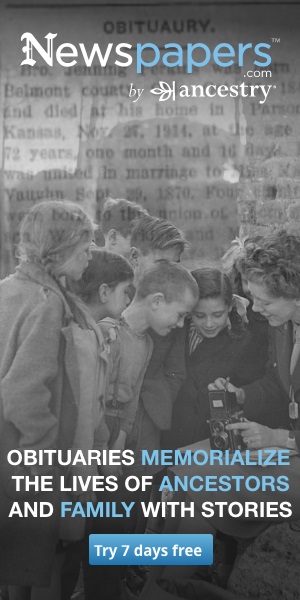U.S., Social Security Death Index, 1935-2014
Ashleys and Mannings Had Great Impact on the South
This article is compiled by Julian Williams.
We are sometimes mystified and awed when we hear the sketchy stories of those almost legendary but affluent families who lived, in the early 1800's, along the south side of the Ocmulgee (a part of Telfair County which is now a part of Coffee County). Those wealthy folks with their stately pre-Civil War mansions and plantations along the river road - which now is #107 to Snipesville - was a collective dream come true, but with the attendant theme "the carriage turned into a pumpkin at midnight." The memory of them is truly a fading "gone with the wind" specter which conjures up many questions in our mind. Who were they? Where did they come from? Why did they come? Where did they go?
The following story (furnished to me by Chris Trowell, historian) gives us the feeling of the presence of those aristocratic folk who once inhabited a strip along the southern bank of the Ocmulgee River. A young lawyer traveling from Savannah to Albany (not an easy trip in 1844!) had this to say (his very words) as he looked back on the experience: "The most attractive part of the journey was in that part of Telfair County south of the Ocmulgee, it is now Coffee named in honor of General John Coffee whom I have written of. Along there on adjoining plantations were the Ashleys. The first one comes to going west is [Matt] Ashley's, the next is Cornelius Ashley's, the next is the widow Manning's, who was a sister to the Ashley's [illegible], the next is the widow Ashley, the widow of a deceased brother. These were all good old-time family mansions. On that journey I stopped at Mrs. Mannings and did so on two or three other journeys over southern Georgia from Savannah to the Flint. There was comfort there I assure you. I found damask table cloths, napkins and china, all presided over by a grand dame with gold-rimmed glasses that reminded me of Virginia and South Carolina dames in Colonial times. There I slept on the biggest and heaviest bedstead I ever saw and it was all mahogany, and heavy mahogany. The husband of Mrs. Manning was the brother of the older Governor Manning of South Carolina. No one resided with her but her son William, then a man at his majority. Later, and I suppose after the death of his mother, he married and became a citizen of Lowndes County. From there, he went to the war, and was Colonel of a regiment. He is dead, and for any man to be a better man he would have to be a saint. The Ashley's were a good, old-time south Georgia family, scattered from Telfair to Camden."
The Ashleys and Mannings covered more territory than that. John Ashley, about 1662, married Jane, Lady Cooper, in Lancaster, England. The succession of sons went: Thomas Ashley (b. 1687, Lancaster, England), Thomas Ashley, Jr. (b. 1710, Solomon's Creek, N.C.), William Ashley (Anson Co., N.C.). William had a son, Nathaniel (1730-1810) who married Jane Williams.
They had one son who made quite a name for himself. Lodowick Ashley went to East Florida where he participated in a plot to overthrow the Spanish government. He was instrumental in the taking of Amelia Island. After this escapade he came back and settled down in Telfair County where he and his descendants were prominent in developing the lower Ocmulgee area. They were very active in the social, civic and political life of Jacksonville, Georgia.
His brother, William Ashley (1763-1839), married Mary Raines, and they had a son named Nathaniel (1789-1853) who married Caroline Marshall. This is of interest to Douglas folks, especially, because their son was named Matt Ashley (1829-1895) who married Letitia W. Rogers and their son was John Marshall Ashley, first husband of Ada Clements. Those familiar with this story can tell you how he died of heartache and other ailments at the death of his only child, a son. After this Ada married John Slater and he committed suicide at what we know as the Ashley-Slater House in Douglas. It will soon be the Center for Tourism.
Nathaniel's sister, Martha Ashley, married Laurence Manning who was brother of Richard I. Manning (Governor of South Carolina, 1824-26). The governor brought progressive and sweeping reforms to the Palmetto State. Martha is buried near her home.
Richard's son was John Laurence Manning (Governor of South Carolina, 1852-54) and was responsible for the state having one of the most beautiful statehouses (capitol building) in the world, --"being executed in a style and finish heretofore unequaled in that line."
A third Manning was governor of the great state of South Carolina -- Richard I. Manning (probably named for his grandfather), who was a nephew of John Laurence Manning. He was governor from 1915-1919.
And we must not leave out Col. William Manning, son of Laurence Manning and Martha Ashley Manning. He was colonel of the 50th Regiment, Georgia, CSA, Civil War. The war took its toll. Not only did the colonel come down with debilitating hepatitis but he lost almost all his worldly possessions. His slaves freed, his resources depleted, and his spirit staggering, he moved to Valdosta from the old area south of the river (which had been Telfair but just prior to the war was made a part of Coffee). He and his wife are buried there in Sunset Cemetery. Like the Ashley River in South Carolina, Ashley Street in Valdosta will remind us for time to come that the Ashleys and the Mannings came to our part of the country, not as sojourners in a foreign land, but to become a part of the fabric of the arena in which they found themselves.


